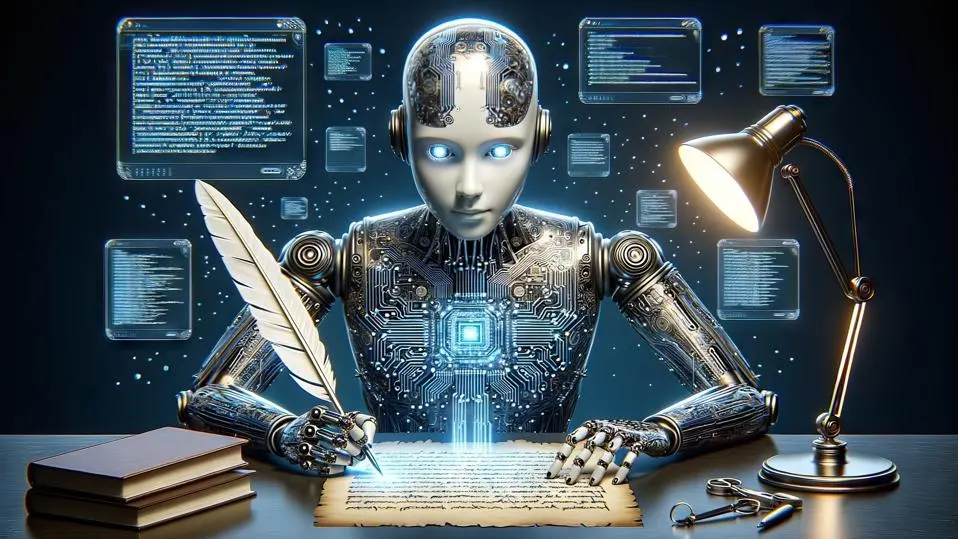To create, build and maintain robots, robotics engineering is a multidisciplinary field that brings together mechanical engineering, electrical engineering, computer science and control systems. As robotic technology continues to develop and find more applications in many areas, it is important to understand the basic ideas behind robotic technology. These ideas form the basis for building robots that can perform complex tasks, adapt to changing environments, and work well with humans during interactions.
1. Basic Knowledge of Robot Design:
How a robot is built is the most important part of robotics. This also applies to the mechanics of the structure, which must be strong enough to handle the stresses of use and at the same time adaptable enough to achieve many things. A robot’s frame, actuators, joints, and end effectors are all part of its mechanical design. Movement is achieved by actuators, which can be electric motors, hydraulic systems or gas systems. Because joints and end effectors (such as grippers or tools) can connect to their environment, they can move in different ways. Choosing materials that are strong, lightweight and durable is also part of the planning process to ensure optimal performance.
2. Methods and Algorithms to Control Things:
The operating system is very important to ensure that the robot works properly. They tell the robot how to interpret information from sensors and carry out commands. Hardware and software components are associated with this. On the hardware side, the control system uses a microcontroller or processor to process sensor data and tell the actuators what to do. Formulas in the software tell the robot how to move or how to respond to different inputs. Path planning and feedback control are two of the algorithms. Path planning determines the best route for the robot to take, and feedback control changes its movement based on data collected on the spot. Ensuring that these systems work properly and respond quickly is important for the proper functioning of the robot.
3. Sensors and How We See Things:
Sensors are important for a robot to understand its environment. They provide robots with the information they need to understand and connect to their environment. Cameras, ultrasonic sensors, thermal sensors and lidars are all common sensor types. Ultrasonic and infrared sensors determine the distance to nearby objects while cameras take photos. LiDAR sensors can create highly detailed 3D maps of the environment. The controller on the robot uses information from these devices to make choices and adapt to new situations. For a robot to do its job properly and safely, sensors must be integrated properly.
4. Automation and Coding:
Programming is an important part of robotic engineering because it enables robots to perform various tasks in a specific direction. This is done by writing code that tells the robot what to do and how to respond. Python, C++, and Java are some of the programming languages used in robots. The code must handle things like moving and changing objects and communicating with other systems. Automation also includes creating systems that work without human assistance. This requires creating algorithms and control techniques that enable robots to perform the same tasks over and over again in a consistent and efficient manner.
5. How Humans and Robots Interact?
The field of robotics engineering called human-robot interaction (HRI) is constantly growing. The goal is to create robots that can communicate safely and effectively with humans. This means, among other things, that the robot can understand and respond to human emotions, gestures and commands. When it comes to HRI, security, usability and communication are important factors to consider. Robots must be built to work safely around humans. For example, they must have the ability to detect a collision and stop in an emergency. Bots should be easy to operate because their user interface should be simple and easy to understand. Robots and humans need to be able to speak clearly to each other to function in areas such as healthcare, customer service and co-production.
6. Social and Ethical Implications:
As robots become more social, ethical and social problems arise. Examples include addressing issues of privacy, job displacement and abuse. Robots must be used appropriately and must not infringe on privacy or autonomy. Understanding how robots impact the workforce and how they complement human capabilities has social implications. Progress in responsible robotics requires standards and policies that address these challenges.
7. Testing and Reliability:
Successful robot deployment requires reliability and robustness. By testing the robot in different situations, defects can be detected and resolved. To ensure performance, mechanical components, operating systems and software algorithms must be tested. Thorough testing, quality control and maintenance ensure reliability. Test results inform updates and improvements to the robot system to maintain performance and safety.
Conclusion:
Finally, robotics engineering includes design, control, sensing, programming, and human-robot interaction. Advances in robotics require ethical and social considerations, rigorous testing and keeping up with trends. By understanding and using these concepts, robotics engineers can design robots that improve human lives and advance technology.
FAQs:
1. What role do sensors play in robotics?
Robots use sensors to understand their environment. Camera, ultrasound, infrared and lidar sensors are common. Ultrasonic and infrared sensors measure distances, lidar builds 3D maps and cameras capture images. The robot’s control system uses sensory input to make judgments and perform tasks accurately.
2. Which robot programming languages are popular?
Common robot programming languages are Python, C++ and Java. These languages are used to code robot movements, object manipulation, and system interactions. Robot applications, performance needs, and developer preferences can determine the programming language.
3. Why is human-computer interaction (HRI) important?
HRI designs robots that interact safely and successfully with people. It’s about building robots that can understand and respond to human commands, gestures and emotions. HRI enables robots to work alongside humans in healthcare, customer service and manufacturing, increasing their usability and safety.
4. What are the ethical and social implications of robotics?
Privacy, job displacement and abuse are ethical and social issues with robots. When creating and using bots, privacy and individual rights must be respected. In order to combat job losses, assistance is also necessary for workers affected by automation. Responsible use of technology requires standards and procedures for bot abuse.
5. How can the reliability of the robot system be guaranteed?
Thorough testing, quality control and maintenance guarantee the reliability of robotic systems. Testing the robot’s components and systems in different environments can help identify and resolve problems. Test-based maintenance and updates ensure your robot is safe and performs well over time.



